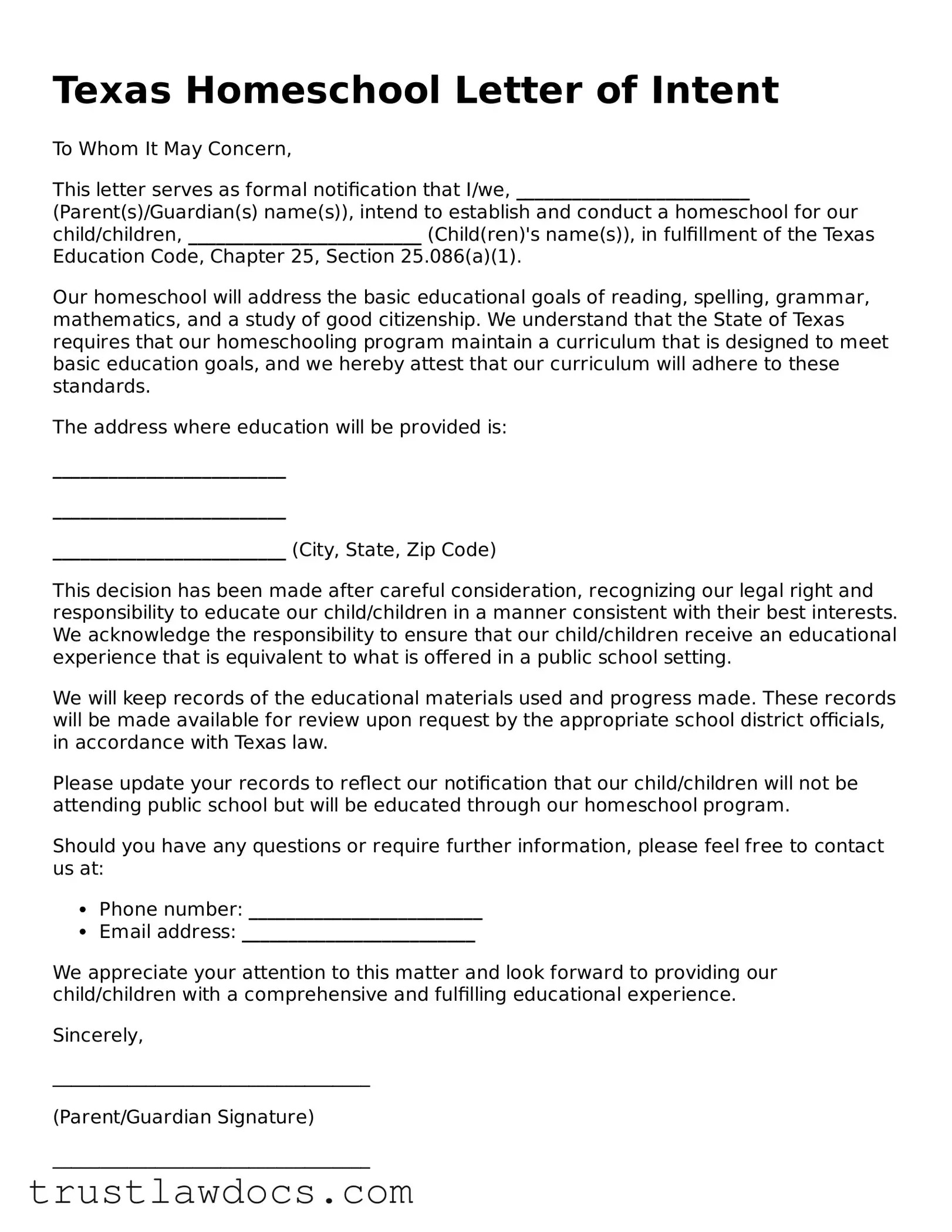Texas Homeschool Letter of Intent
To Whom It May Concern,
This letter serves as formal notification that I/we, _________________________ (Parent(s)/Guardian(s) name(s)), intend to establish and conduct a homeschool for our child/children, _________________________ (Child(ren)'s name(s)), in fulfillment of the Texas Education Code, Chapter 25, Section 25.086(a)(1).
Our homeschool will address the basic educational goals of reading, spelling, grammar, mathematics, and a study of good citizenship. We understand that the State of Texas requires that our homeschooling program maintain a curriculum that is designed to meet basic education goals, and we hereby attest that our curriculum will adhere to these standards.
The address where education will be provided is:
_________________________
_________________________
_________________________ (City, State, Zip Code)
This decision has been made after careful consideration, recognizing our legal right and responsibility to educate our child/children in a manner consistent with their best interests. We acknowledge the responsibility to ensure that our child/children receive an educational experience that is equivalent to what is offered in a public school setting.
We will keep records of the educational materials used and progress made. These records will be made available for review upon request by the appropriate school district officials, in accordance with Texas law.
Please update your records to reflect our notification that our child/children will not be attending public school but will be educated through our homeschool program.
Should you have any questions or require further information, please feel free to contact us at:
- Phone number: _________________________
- Email address: _________________________
We appreciate your attention to this matter and look forward to providing our child/children with a comprehensive and fulfilling educational experience.
Sincerely,
__________________________________
(Parent/Guardian Signature)
__________________________________
Date
